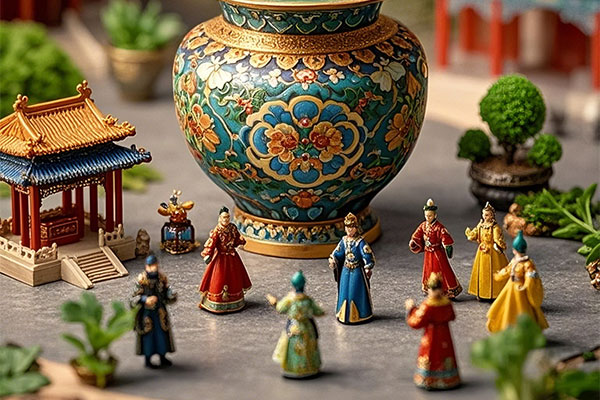Chinese Intangible Cultural Heritage - Cloisonné (Jingtailan)
Introduction
Cloisonné, also known as "copper-bodied filigree enamel," is a treasure of traditional Chinese arts and crafts. It involves creating intricate designs with thin copper wires on a copper body, filling them with enamel glaze, and firing them at high temperatures. Renowned for its vibrant colors, exquisite patterns, and unique craftsmanship, cloisonné is celebrated as the "Pearl of Eastern Art."
History
The history of cloisonné dates back to the Yuan Dynasty, but it truly flourished during the Jingtai period (1450-1457) of the Ming Dynasty, hence the name "Jingtailan." During the Ming Dynasty, cloisonné craftsmanship reached its peak, becoming an imperial art form. In the Qing Dynasty, cloisonné further developed, with even more refined techniques, and was widely used for palace decorations and diplomatic gifts.
Regional Characteristics
The production of cloisonné is primarily concentrated in Beijing, especially in the imperial workshops of the Ming and Qing Dynasties. Beijing cloisonné is renowned for its exquisite craftsmanship and royal elegance, with pieces often used for palace displays and diplomatic gifts. Additionally, regions like Yunnan and Guangdong also produce cloisonné, each with its own distinct styles and techniques.
Cultural Significance
Cloisonné is an important carrier of Chinese traditional culture. Its patterns often draw inspiration from natural landscapes, historical stories, myths, and legends, reflecting the aesthetic tastes and cultural connotations of the Chinese people. Cloisonné works are not only decorative but also imbued with auspicious meanings and philosophical ideas, such as "dragons and phoenixes bringing prosperity" and "flowers symbolizing wealth and honor."
Craftsmanship
The production process of cloisonné is highly complex, involving steps such as body forming, filigree work, enamel filling, firing, polishing, and gilding. Each step requires exquisite skill and extensive experience. Particularly, the filigree and enamel filling processes demand advanced techniques and meticulous craftsmanship.
Preservation and Innovation
As a Chinese Intangible Cultural Heritage, cloisonné has received widespread attention and protection from the state and society. The Beijing municipal government and cultural institutions actively promote the inheritance and development of cloisonné art, nurturing a new generation of cloisonné artisans. At the same time, cloisonné continues to innovate, integrating modern design and demonstrating renewed vitality.
Conclusion
Cloisonné is a treasure of Chinese traditional culture, carrying a rich historical and cultural legacy. By preserving and passing down this ancient art form, we can not only appreciate the beauty of cloisonné works but also gain a deeper understanding and appreciation of Chinese traditional culture.







